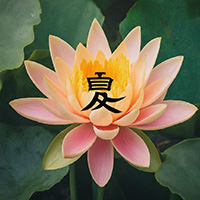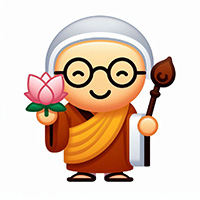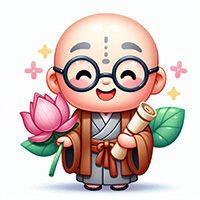Day 27 concludes Chapter 23, The Previous Life of Medicine-King Bodhisattva.
Having last month considered the extinction of Sun-Moon-Pure-Bright-Virtue Buddha, we consider Gladly-Seen-By-All-Beings Bodhisattva offering.
“Thereupon Gladly-Seen-By-All-Beings Bodhisattva thought again, ‘I have now made these offerings, yet I do not think that they are enough. I will make another offering to the śarīras.’
“He said to the Bodhisattvas, to the great disciples, and also to all the other living beings in the great multitude including gods, dragons and yakṣas, ‘Look with one mind! Now I will make another offering to the śarīras of Sun-Moon-Pure-Bright-Virtue Buddha.’
“Having said this, he burned his arms adorned with the marks of one hundred merits, and offered the light of the flame to the eighty-four thousand stupas for seventy-two thousand years.[1, 2, 3, 4, 5, 6, 7, 8] [By doing so,] he caused innumerable seekers of Śrāvakahood and many other asaṃkhyas of people to aspire for Anuttara-samyak-saṃbodhi, and obtain the samadhi by which they could transform themselves into the other living beings.
“Having seen him deprived of his arms, the Bodhisattvas, gods, men, asuras and others were overcome with sorrow. They said, ‘This Gladly-Seen-By-All-Beings Bodhisattva is our teacher. He is leading us. Now he has burned off his arms. He is deformed.’
“Thereupon Gladly-Seen-By-All-Beings Bodhisattva vowed to the great multitude, saying, ‘I shall be able to obtain the golden body of the Buddha because I gave up my arms. If my words are true and not false, I shall be able to have my arms restored.’
“When he had made this vow, his arms were restored because his merits, virtues and wisdom were abundant. Thereupon the one thousand million Sumeru-worlds quaked in the six ways, and the gods rained down jeweled flowers. All the gods and men had the greatest joy that they had ever had.”
The Buddha said to Star-King-Flower Bodhisattva:
“What do you think of this? Gladly-Seen-By-All-Beings Bodhisattva was no one but Medicine-King Bodhisattva of today. He gave up his body in this way, offered it [to the Buddha], and repeated this offering many hundreds of thousands of billions of nayutas of times [in his previous existence]. [He knows that he can practice any austerity in this Sahā-World. Therefore, he does not mind walking about this world.]
The Daily Dharma offers this:
What do you think of this? Gladly-Seen-By-All-Beings Bodhisattva was no one but Medicine-King Bodhisattva of today. He gave up his body in this way, offered it [to the Buddha], and repeated this offering many hundreds of thousands of billions of nayutas of times [in his previous existence]. [He knows that he can practice any austerity in this Sahā-World. Therefore, he does not mind walking about this world.]
The Buddha gives this explanation to Star-King-Flower Bodhisattva in Chapter Twenty-Three of the Lotus Sūtra. The story of the previous life of Medicine-King Bodhisattva shows us the capacities we have already developed and are not aware of. When we see ourselves as choosing to come into this world of conflict to benefit all beings, rather than stuck where we do not want to be and just making the best of it, then it is much easier to let go of our delusions.
The Daily Dharma is produced by the Lexington Nichiren Buddhist Community. To subscribe to the daily emails, visit zenzaizenzai.com

















